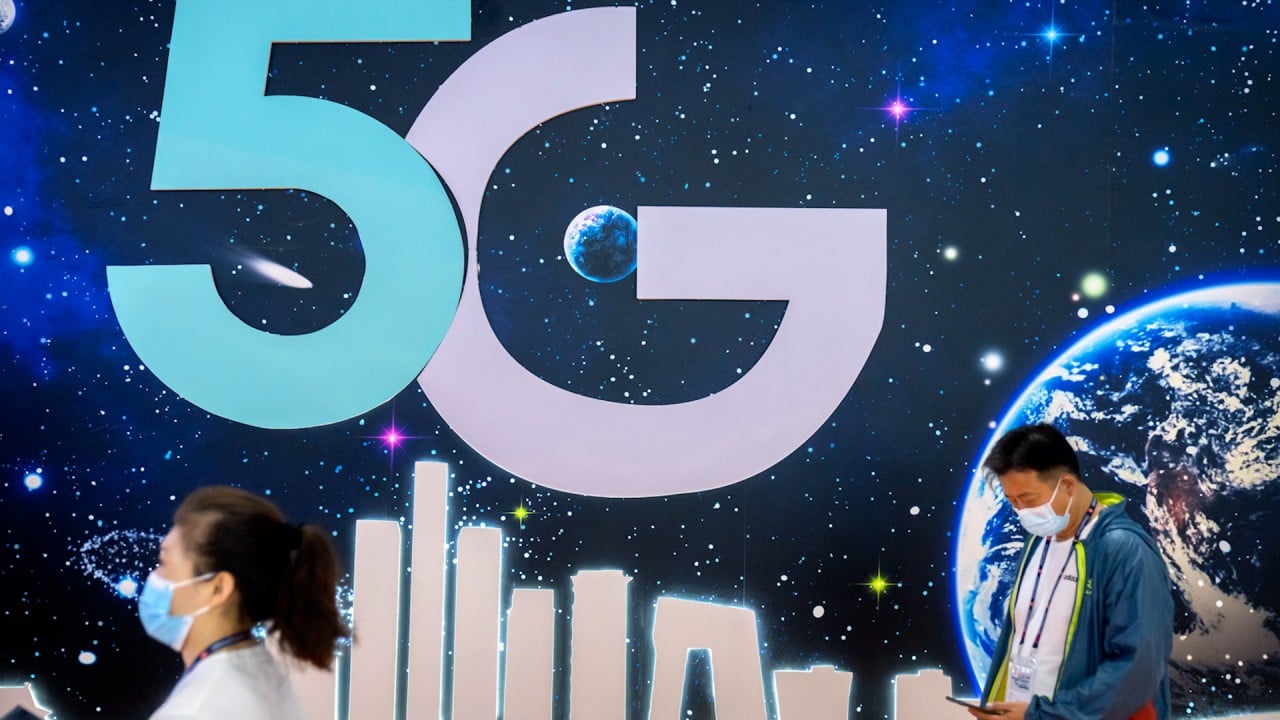5G communications technology has been overhyped but 6G may live up to the revolutionary promise that its predecessor did not, a British expert told a leading tech conference in China.
Jiangzhou Wang, a professor at the University of Kent’s school of engineering, told a technology conference in Beijing on Friday that 5G had yet to result in a killer app.
“I am objectively disappointed with 5G,” Shanghai-based financial news site Yicai quoted Wang as saying at the Sohu Annual Sci-Tech Conference.
“In the 5G era, we have not seen a blockbuster application for ordinary consumers, nor has it been widely applied in vertical industries. Future 6G technology might be revolutionary rather than incremental.
“5G has been overhyped, as if it can do everything.”
When mobile telecommunications made the leap from 2G to 3G, users were no longer limited to text messages but could also send images and music. This spurred the growth of mobile versions of chat apps such as QQ, games, and streaming media.
The arrival of the 4G era allowed mobile payments to flourish along with apps like WeChat and Douyin.
But the killer application of the 5G era has yet to materialise.
“One key reason is that 5G technical standards still do not meet the requirements of vertical industry applications,” Wang said, according to the Yicai report.
“Currently under development, 6G is expected to revolutionarily address the issues that 5G cannot fully serve in vertical industries.”
He said that although 5G latency – or the delay in data transmission – was already very low it still failed to meet the requirements of some industry applications.
The next-generation 6G networks are expected to be 100 times faster than 5G, with network latency reduced from milliseconds to microseconds.
China began issuing 5G licences to communications companies in June 2019 and since then 3.65 million 5G base stations have been built, servicing 800 million or so 5G users across the country.
A number of countries, including the United States and Japan, are moving to ensure they are at the forefront of 6G development.
The US Federal Communications Commission has opened up spectrum in the terahertz range for experimental use, which is crucial for 6G. The US government is also working with the private sector on 6G research and development to set standards.
Japan plans to establish key technologies around 2025 and begin offering “beyond 5G” communication services by 2030, in partnership with companies like NTT Docomo and Sony.
According to the International Telecommunication Union, an agency under the United Nations, 6G may lead to the development of immersive communication, ultra-large-scale connectivity, extremely high reliability and low latency, integration of AI and communication, integration of sensing and communication, and ubiquitous connectivity.
Wang told the Beijing conference that 6G networks would deeply integrate the physical and digital environments, creating a new world of intelligent connectivity.
He said revolutionary applications could enable services like holographic communication.
Such technology could allow “two people thousands of kilometres apart to interact face-to-face via mobile networks, greatly enhancing immersive experiences and making collaborative work, remote education, interactive applications, and social interactions a reality”.
“Another example is digital twins, which could simulate human behaviour and thinking, enabling interaction with real humans,” Wang said, according to the report.
“Doctors could use digital twin technology to create human models for organ testing or to simulate a patient’s physiological state, improving medical efficiency.”




